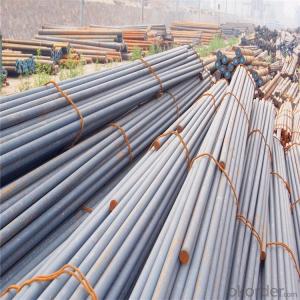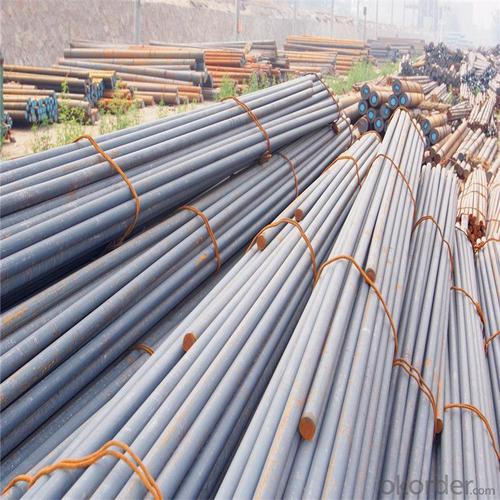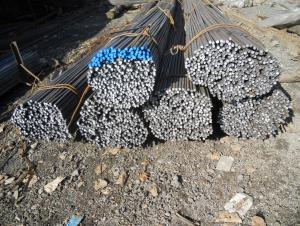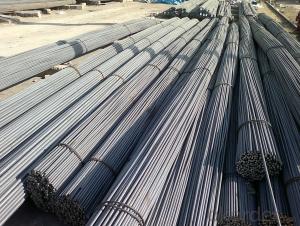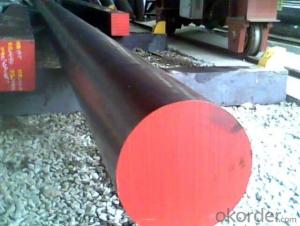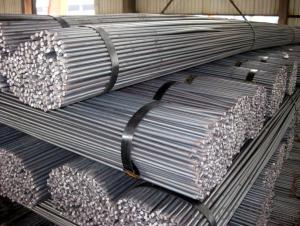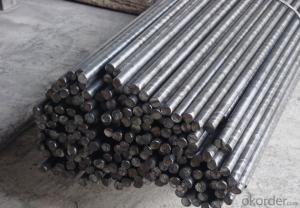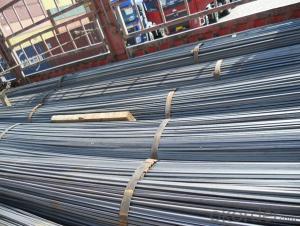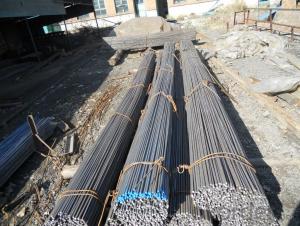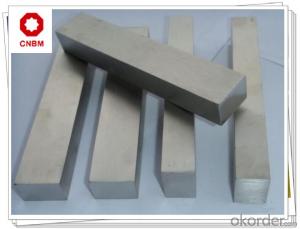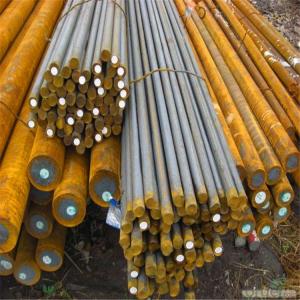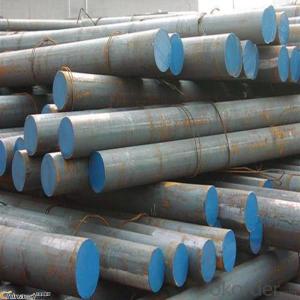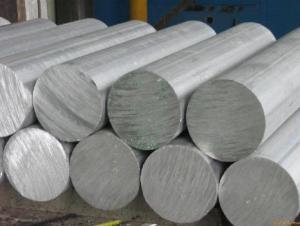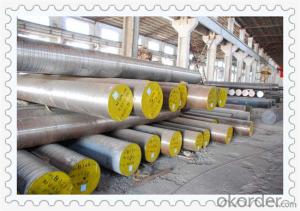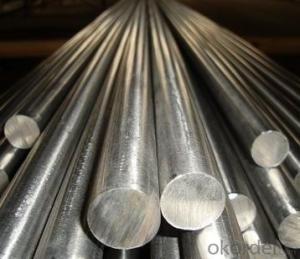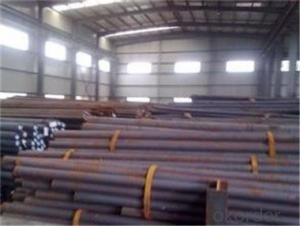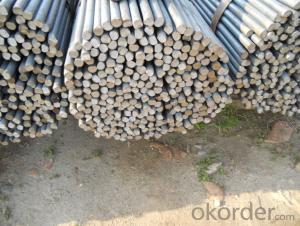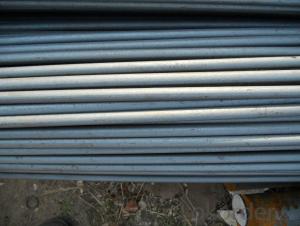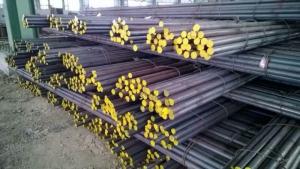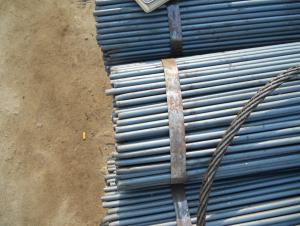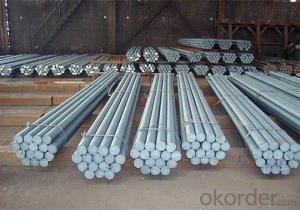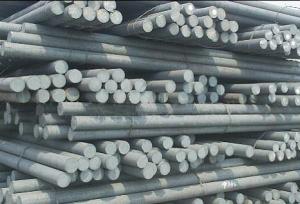18NiCrMo5 Hot-rolled Gear Steel Round Bars
- Loading Port:
- Tianjin
- Payment Terms:
- TT OR LC
- Min Order Qty:
- 100 m.t.
- Supply Capability:
- 50000 m.t./month
OKorder Service Pledge
OKorder Financial Service
You Might Also Like
Specification
18NiCrMo5 Hot-rolled Gear Steel Round Bars
Product Description of 18NiCrMo5 Hot-rolled Gear Steel Round Bars
1. Steel grade: 18CrMnTi
2. Length: 6M-12M
3. Diameter: 16mm-300mm
4. Product range: round bar, flat bar, square bar
5. Technique: Hot rolled, forged, cold drawn
Specification of 18NiCrMo5 Hot-rolled Gear Steel Round Bars
Material | 18CrMnTi | Round bar | Dia(mm) | 16-300mm |
Process | EAF + LF + VD + Forged + Heat Treatment (optional) | Length (mm) | Max 12m | |
Heat treatment | Normalized / Annealed / Quenched / tempered | Flat bar | Thickness(mm) | 8-500mm |
Delivery condition | Hot forged +Rough machined (black surface after Q/T)+ Turned (optional) | Width(mm) | 70-200mm | |
Test | Ultrasonic test according to SEP 1921-84 D/d | Length (mm) | Max 12m |
Chemical Composition of 18NiCrMo5 Hot-rolled Gear Steel Round Bars
C | Si | Mn | Cr | Ni | Cu |
0.42~0.47 | 0.17~0.37 | 0.35~0.65 | ≤0.25 | ≤0.30 | ≤0.25 |
Photo Show of 18NiCrMo5 Hot-rolled Gear Steel Round Bars
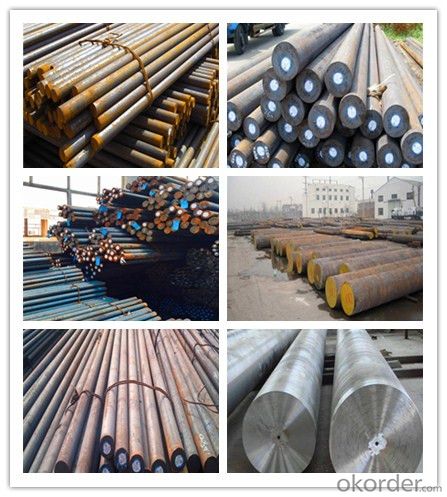
Packing and Delivery:
Packing in bundle package, or as customer's requirements.
Delivery Detail: 45 days after receiving the deposit.
Usage and Applications of 18NiCrMo5 Hot-rolled Gear Steel Round Bars
1. Steel round bar is used in a large number of architectural and engineering structures. Or it can be used in construction of plants for the production of steel house frames, high-voltage transmission towers, bridges, vehicles, boilers, containers, ships, etc.
2. And we can use this kind of product on the performance of the mechanical parts if the demand is not very high.
3. Some special material steel round bar can be used for main shaft of steamer, hummer shank, with big section and supper force.
Company Information
CNBM International Corporation is the most important trading platform of CNBM group.
Whith its advantages, CNBM International are mainly concentrate on Cement, Glass, Iron and Steel, Ceramics industries and devotes herself for supplying high qulity series of refractories as well as technical consultancies and logistics solutions.

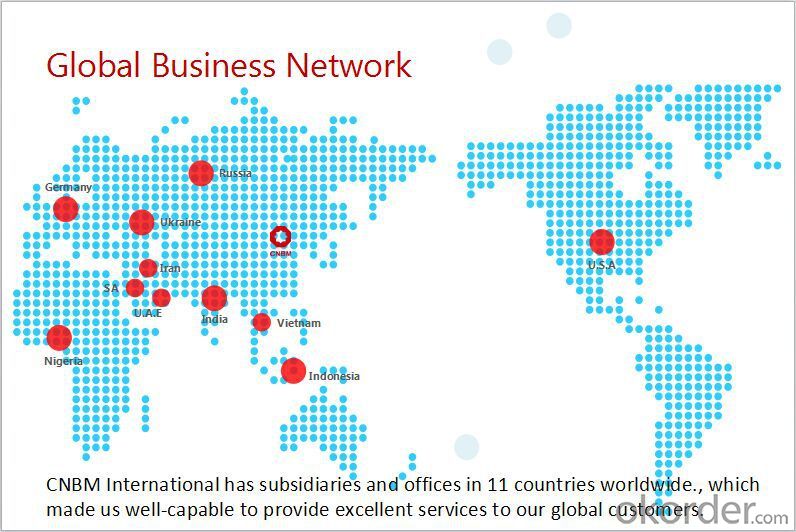
F A Q
1, Your advantages?
professional products inquiry, products knowledge train (for agents), smooth goods delivery, excellent customer solution proposale
2, Test & Certificate?
SGS test is available, customer inspection before shipping is welcome, third party inspection is no problem
3, Factory or Trading Company?
CNBM is a trading company but we have so many protocol factories and CNBM works as a trading department of these factories. Also CNBM is the holding company of many factories.
4, Payment Terms?
30% TT as deposit and 70% before delivery.
Irrevocable L/C at sight.
5, Trading Terms?
EXW, FOB, CIF, FFR, CNF
6, After-sale Service?
CNBM provides the services and support you need for every step of our cooperation. We're the business partner you can trust.
For any problem, please kindly contact us at any your convenient time.
We'll reply you in our first priority within 24 hours.
- Q: What is the tolerance for diameter in steel round bars?
- The tolerance for diameter in steel round bars can vary depending on the specific standards and requirements set by the manufacturer or industry. Generally, the tolerance for diameter in steel round bars is specified within a certain range to ensure the desired level of precision and consistency in the dimensions of the bars. This tolerance is usually expressed as a plus or minus value, indicating the acceptable deviation from the specified diameter. It is important to check the relevant industry standards or consult with the manufacturer to determine the specific tolerance for diameter in steel round bars, as it can differ based on the intended application and the manufacturing process used.
- Q: How do steel round bars compare to wrought iron bars?
- Steel round bars and wrought iron bars exhibit distinct disparities that distinguish them from each other. To begin with, steel round bars consist of an amalgam of iron and carbon, while wrought iron bars are comprised of pure iron with a low carbon content. This dissimilarity in composition results in contrasting properties. Steel round bars are renowned for their robustness and endurance, rendering them suitable for a wide array of purposes, including construction, manufacturing, and engineering. Conversely, wrought iron bars are pliable and more malleable, enabling them to be easily fashioned and molded into intricate designs. This characteristic renders wrought iron bars popular in decorative applications such as gates, fences, and ornamental pieces. Another distinction lies in their manufacturing processes. Steel round bars are typically manufactured through the process of hot rolling, which encompasses heating the steel billet and passing it through a series of rollers to fashion it into the desired round bar form. In contrast, wrought iron bars are formed via a labor-intensive procedure known as blacksmithing. This involves heating the iron and repeatedly pounding it to eliminate impurities and construct a fibrous structure, thereby resulting in its distinctive grainy appearance. In terms of expenses, steel round bars generally prove to be more economical compared to wrought iron bars. The manufacturing process for steel is more streamlined and efficient, thereby leading to reduced production costs. Conversely, wrought iron bars necessitate more time and labor, rendering them pricier. Finally, concerning corrosion resistance, steel round bars hold an advantage. Steel can be further alloyed with elements such as chromium, nickel, and molybdenum to augment its resistance against rust and corrosion. This renders steel round bars suitable for outdoor applications where they may encounter moisture and harsh environmental conditions. Wrought iron bars, although possessing some level of corrosion resistance, are more susceptible to rusting and require regular maintenance to prevent deterioration. In conclusion, steel round bars and wrought iron bars differ in terms of composition, strength, manufacturing process, cost, and corrosion resistance. The selection between the two relies on the specific requirements of the application, with steel round bars being favored for their strength and affordability, while wrought iron bars are often chosen for their malleability and decorative allure.
- Q: What are the different types of steel round bars used in the automotive exhaust systems?
- There are various types of steel round bars used in automotive exhaust systems, including stainless steel, mild steel, and high-strength low-alloy (HSLA) steel. Stainless steel is often preferred for its corrosion resistance and durability, while mild steel is commonly used for its lower cost and ease of fabrication. HSLA steel, on the other hand, offers a balance between strength and weight, making it suitable for performance-oriented exhaust systems. The specific type of steel round bar utilized depends on factors such as the desired performance, cost considerations, and regulatory requirements.
- Q: Can steel round bars be coated?
- Indeed, it is possible to coat steel round bars. Coating them yields numerous advantages, such as enhanced resistance to corrosion, increased durability, and improved visual appeal. The most commonly utilized coatings for steel round bars encompass galvanized coatings, epoxy coatings, and powder coatings. Galvanized coatings encompass the application of a zinc layer onto the steel's surface, which provides exceptional protection against corrosion. Epoxy coatings, on the other hand, find common application in industrial settings due to their remarkable chemical resistance and ability to withstand harsh environments. Powder coatings, involving the electrostatic application of a dry powder, are then cured under heat to form a robust and protective layer. These coatings can be employed on steel round bars to safeguard against rust and other forms of corrosion, thereby rendering them suitable for a broad scope of applications across various industries, including construction, manufacturing, and automotive.
- Q: Are steel round bars available in different shapes other than round?
- No, steel round bars are typically only available in round shapes. The term "round bar" refers specifically to a cylindrical shape with a circular cross section. However, there are other types of steel bars available in different shapes, such as square bars, flat bars, and hexagonal bars. These bars have specific applications and properties that make them suitable for different uses. So, while steel round bars are limited to round shapes, there are various other shapes of steel bars available in the market to cater to different requirements.
- Q: What are the tolerances for steel round bars?
- The tolerances of steel round bars can differ based on the specific requirements of the application and manufacturing process. Generally, steel round bars have specified tolerances for diameter, straightness, and length. For diameter tolerance, it is usual to find tolerances ranging from +/- 0.001 inches to +/- 0.005 inches. This means that the actual diameter of the steel round bar can deviate within this range from the specified diameter. The size and grade of the bar determine the specific tolerance. Straightness tolerance refers to the permissible deviation in the straightness of the bar. Typically, it is specified as a maximum deviation per unit length, such as 0.125 inches per foot. This ensures that the bar remains straight and within acceptable limits when measured along its length. Length tolerance determines the allowable variation in the overall length of the round bar. It can range from +/- 0.125 inches to +/- 0.5 inches, depending on the size and grade of the bar. This ensures that the bar meets the required length specifications. It is important to note that these tolerances can vary based on industry standards, customer specifications, and the manufacturing method employed. Moreover, certain applications may have stricter tolerance requirements, particularly in industries like aerospace or automotive where precision is crucial. To summarize, the tolerances for steel round bars encompass diameter, straightness, and length. The specific tolerances depend on the size, grade, and application of the round bar, as well as any relevant industry standards or customer specifications.
- Q: What are the tolerance levels for steel round bars?
- The tolerance levels for steel round bars can vary depending on the specific requirements and industry standards. Generally, the tolerance levels for diameter can range from +/- 0.001 inches to +/- 0.005 inches, while the tolerance levels for length can range from +/- 0.125 inches to +/- 0.250 inches. It is important to refer to the relevant specifications or consult with a manufacturer to determine the specific tolerance levels for a particular steel round bar.
- Q: How are steel round bars used in the manufacturing of agricultural machinery?
- Steel round bars are commonly used in the manufacturing of agricultural machinery as they provide strength, durability, and flexibility. These bars are often used to construct various components such as axles, shafts, and pins, which play a crucial role in supporting and transmitting power within the machinery. The high tensile strength of steel round bars allows them to handle heavy loads and withstand harsh operating conditions, ensuring the reliability and longevity of the agricultural equipment.
- Q: How do you determine the strength and hardness of a steel round bar?
- To assess the strength and hardness of a steel round bar, a variety of tests and techniques can be utilized. The tensile strength test is a frequently employed method. During this test, an increasing load is applied to a sample of the steel round bar until it reaches its breaking point. The maximum load it can endure before breaking is recorded, providing an indication of the bar's strength. Another essential measure of steel round bar quality is hardness testing. The Rockwell hardness test is commonly used, involving the pressing of a diamond or tungsten carbide ball into the bar's surface with a specific load. The depth of the resulting indentation is measured, and the hardness value is determined according to a standardized scale. Additionally, the Brinell hardness test can be employed, which entails pressing a hardened steel ball into the round bar's surface with a specific load. The diameter of the resulting indentation is measured, allowing for the calculation of hardness based on the applied load and indentation size. Furthermore, non-destructive techniques such as ultrasonic testing and magnetic particle inspection can offer insight into the steel round bar's internal structure, defects, and cracks, indirectly indicating its strength and hardness. It is crucial to acknowledge that various factors, including steel composition, heat treatment, and manufacturing processes, can influence the strength and hardness of a round bar. Therefore, consulting relevant standards and specifications that define the expected properties for the specific type of steel round bar being tested is advisable.
- Q: 1, three, two, steel, wire rod, round steel what is the difference?
- Wire is a wire, usually refers to the use of "high speed non-twist wire rod rolling mill, ordinary common low carbon steel, hot-rolled wire torsion free cooling (ZBH4403-88) and the high quality carbon steel, hot-rolled wire rod without torsion cold control (ZBH44002-88).
Send your message to us
18NiCrMo5 Hot-rolled Gear Steel Round Bars
- Loading Port:
- Tianjin
- Payment Terms:
- TT OR LC
- Min Order Qty:
- 100 m.t.
- Supply Capability:
- 50000 m.t./month
OKorder Service Pledge
OKorder Financial Service
Similar products
Hot products
Hot Searches
Related keywords
